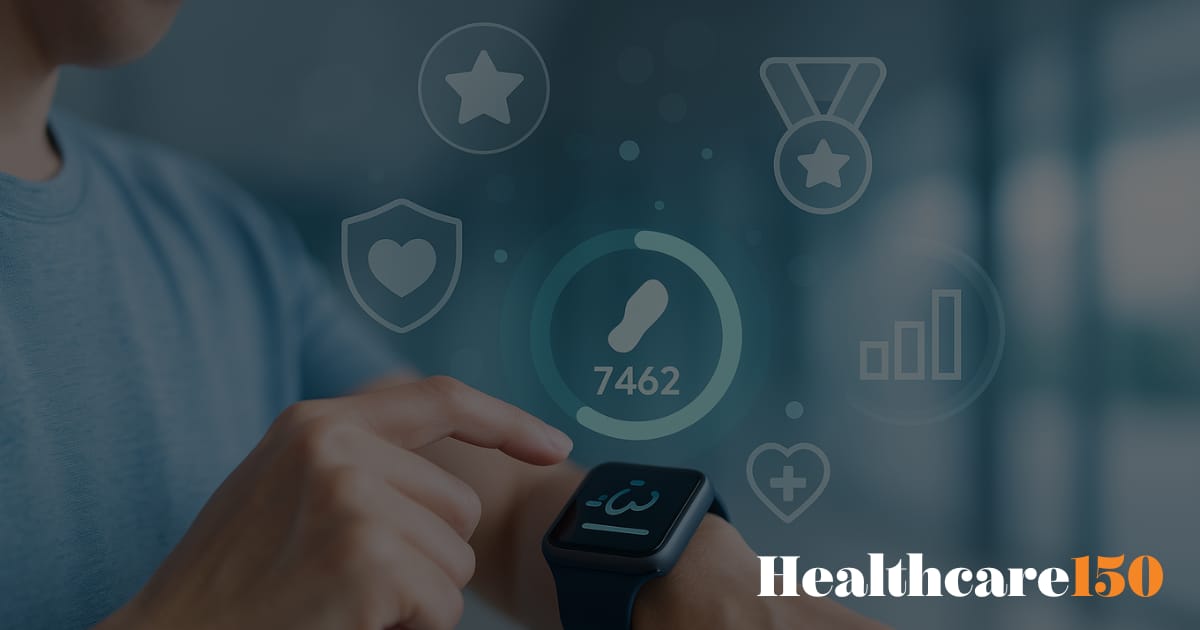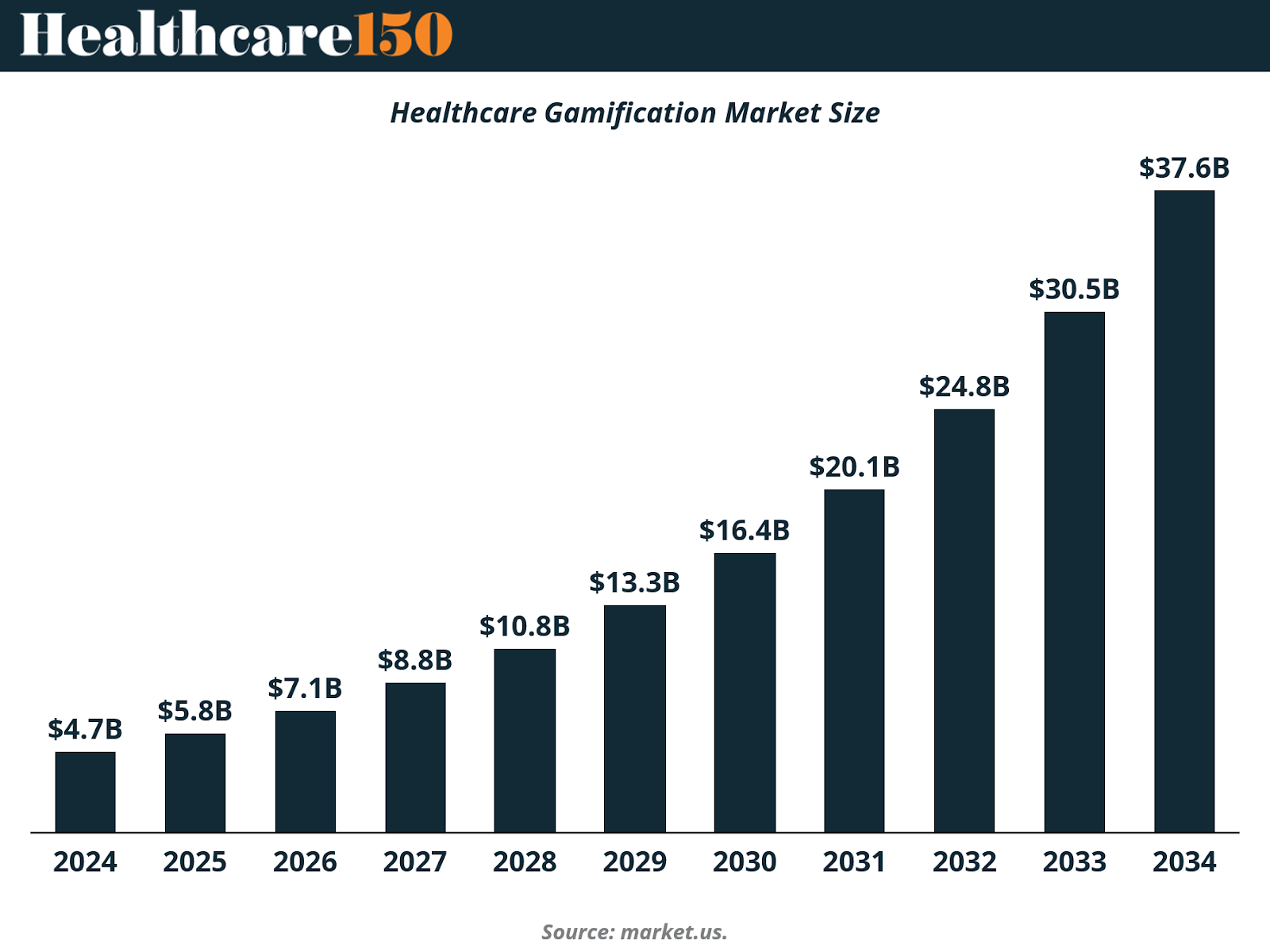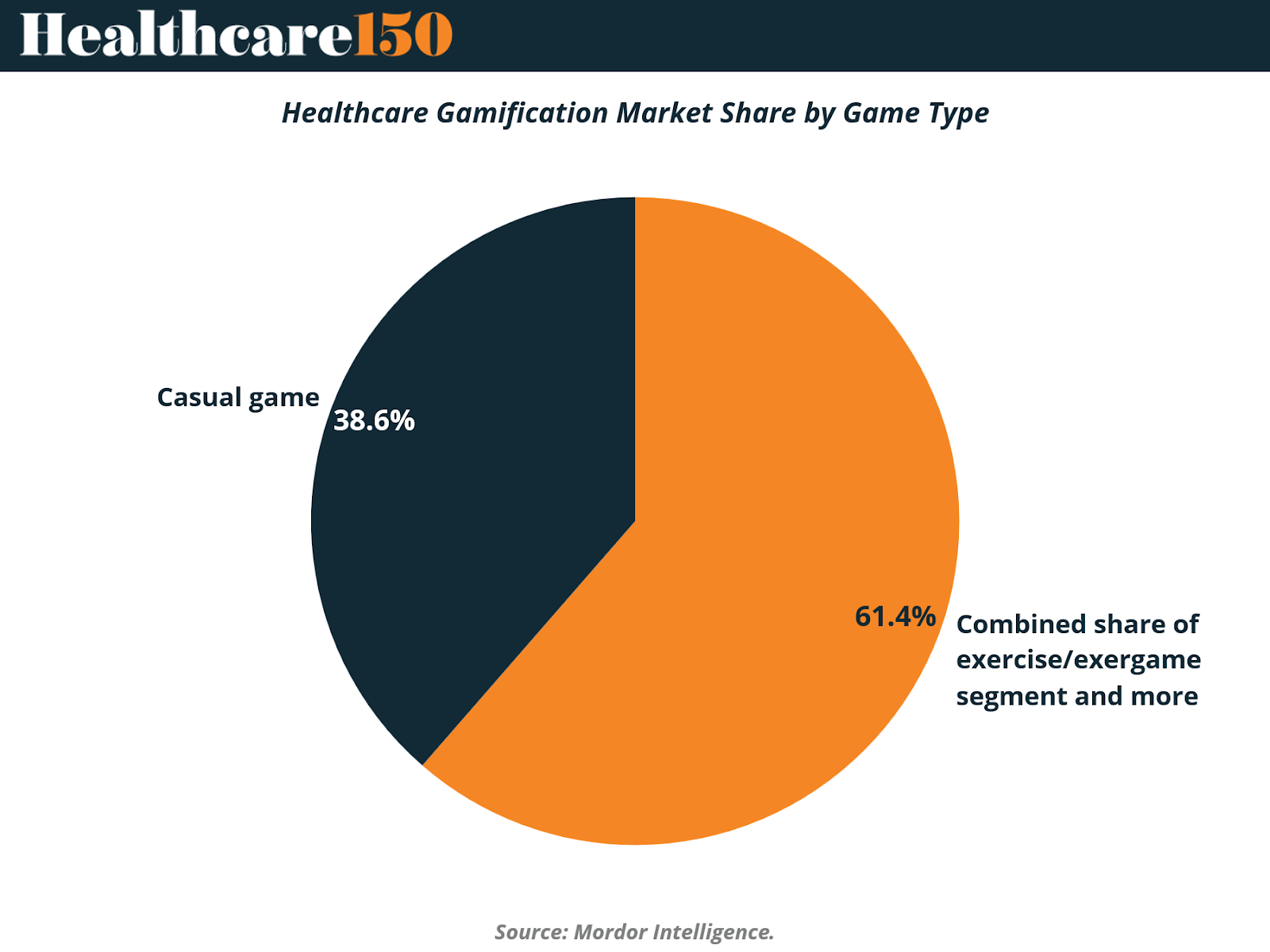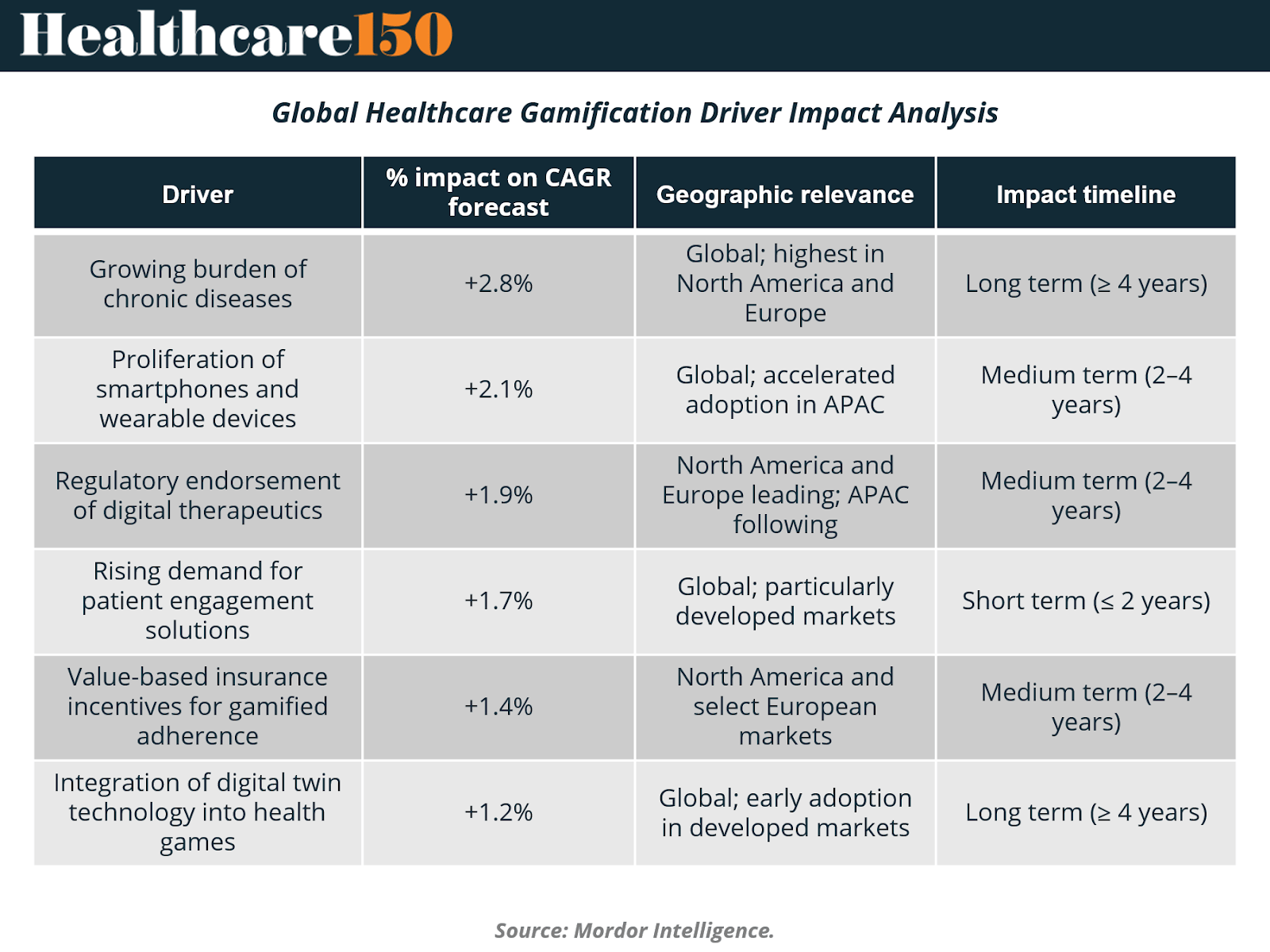- Healthcare 150
- Posts
- Healthcare Gamification: Growth Drivers, Restraints, and Emerging Use Cases in Digital Health Engagement
Healthcare Gamification: Growth Drivers, Restraints, and Emerging Use Cases in Digital Health Engagement
Healthcare is no longer confined to clinics, hospitals, or prescription bottles, it is increasingly taking place in the digital ecosystem that surrounds patients every day.

Introduction
One of the most powerful forces driving this transformation is gamification: the use of game-like mechanics such as points, badges, leaderboards, rewards, and progress tracking to motivate healthier behaviors and sustain patient engagement.
What was once a niche experiment in fitness apps and wellness programs has now become a mainstream tool in chronic disease management, insurance incentives, and even clinical rehabilitation. Whether it is an app that converts daily steps into a friendly competition among coworkers, or a diabetes management platform that rewards consistent medication adherence, gamification is emerging as a critical lever in building healthier routines.
The urgency is clear. Global healthcare systems face unprecedented challenges: an aging population, a surge in chronic conditions, and continuously rising costs. Traditional approaches to patient engagement have struggled to keep pace, studies show that adherence rates for long-term treatments often fall below 50%, costing the system billions annually. Gamification offers a new pathway: by tapping into human psychology, our natural desire for achievement, social recognition, and instant feedback, these solutions create sustainable motivation where conventional methods fall short.
The market for healthcare gamification is scaling rapidly. Recent estimates value it at over $13 billion by 2026, with a CAGR above 25%, reflecting growing adoption not only among consumers but also within health insurers, providers, and corporate wellness programs. Beyond the numbers, early case studies reveal measurable outcomes: patients show higher engagement, lower dropout rates, and even improved clinical results when gamified features are integrated into care.
This report explores how gamification is reshaping healthcare in 2025 and beyond, analyzing its applications across digital health, insurance, wellness, and clinical care. Through fresh data, market trends, and case studies, we will examine both the promise and the limitations of gamification, not only where it works best, but also how it can be scaled responsibly to improve outcomes and reduce costs in a strained global healthcare system.
Healthcare Gamification Market Size
The global healthcare gamification market is on a steep growth trajectory, expanding from USD 4.7 billion in 2024 to a projected USD 37.6 billion by 2034. This represents a remarkable compound annual growth rate (CAGR) of 23.1%, making gamification one of the fastest-growing segments within the broader digital health ecosystem.
The market’s acceleration reflects the growing adoption of digital health platforms, wellness applications, and patient engagement tools that leverage gamified elements to drive behavior change. While the industry is still in its early stages, the forecast suggests that gamification will transition from a supplementary tool to a core strategy for healthcare providers, payers, and wellness companies within the next decade.
Key highlights include:
2024 Baseline: USD 4.7 billion, reflecting early-stage adoption primarily in fitness and wellness applications.
2029 Milestone: Market nearly triples to USD 13.3 billion, driven by integration into chronic disease management and insurance programs.
2034 Outlook: The industry is expected to exceed USD 37.6 billion, as gamification becomes a mainstream mechanism for improving adherence, engagement, and preventive care.
The steep upward curve illustrated in the chart underscores the shift in healthcare priorities, from reactive care to proactive, patient-centered engagement models. With growing investment, regulatory support for digital therapeutics, and evidence of improved patient outcomes, gamification is well-positioned to play a significant role in reshaping global healthcare delivery.

Healthcare Gamification Market Share by Game Type
Within the expanding healthcare gamification market, different categories of gamified solutions are capturing varying levels of adoption. As of the latest estimates:
Exercise/Exergame & Serious Games: 61.4% market share
Casual Games: 38.6% market share
The dominance of exercise and serious games highlights the growing role of gamification in structured health interventions, including physical therapy, rehabilitation programs, and disease management platforms. These solutions are often designed with measurable health outcomes in mind, making them attractive to healthcare providers and insurers who prioritize efficacy and adherence.
Meanwhile, casual games continue to capture a significant share of the market, driven by consumer-facing wellness apps and fitness trackers. These solutions excel at user engagement and habit formation, making them a powerful gateway for preventive healthcare and lifestyle improvement.
This distribution suggests a dual-path growth trajectory:
On one side, clinical-grade gamification is expanding through partnerships with hospitals, insurers, and digital therapeutics firms.
On the other, consumer-oriented casual games are shaping everyday behaviors at scale, with strong potential for integration into corporate wellness programs and insurance-linked rewards systems.
Together, these segments demonstrate how gamification is evolving into both a serious healthcare tool and a mass-market wellness driver, underscoring its versatility and broad appeal.

Drivers Impact Analysis
The growth of the healthcare gamification market is being shaped by a combination of demographic, technological, and regulatory forces. Each of these drivers contributes directly to the market’s forecast CAGR of 23.1%, though their impact varies in scale, geography, and timeline.
1. Growing burden of chronic diseases (+2.8% impact, long term)
The global rise in chronic conditions such as diabetes, cardiovascular disease, and obesity is the single largest driver of gamification adoption. As healthcare systems shift from acute care to long-term disease management, gamified tools provide a scalable way to improve adherence and lifestyle modification. This impact will be most pronounced in North America and Europe, with lasting influence over the next four years and beyond.
2. Proliferation of smartphones and wearables (+2.1% impact, medium term)
The rapid expansion of smartphone penetration and wearable devices is accelerating the reach of gamified health solutions, particularly in APAC markets where adoption is surging. These devices act as constant feedback loops, allowing gamification mechanics like real-time progress tracking and reward systems to become integrated into daily life.
3. Regulatory endorsement of digital therapeutics (+1.9% impact, medium term)
Governmental and regulatory approval of digital therapeutics has opened new pathways for gamified platforms to be recognized as legitimate medical tools rather than just consumer apps. North America and Europe are leading this trend, with APAC catching up. This creates opportunities for gamification to enter the formal healthcare ecosystem, supported by insurers and providers.
4. Rising demand for patient engagement solutions (+1.7% impact, short term)
Healthcare providers and insurers increasingly seek solutions that foster patient engagement beyond the clinical setting. Gamification addresses this need by transforming routine tasks into engaging experiences. The short-term effect (≤ 2 years) is especially strong in developed markets, where engagement gaps are both costly and measurable.
5. Value-based insurance incentives (+1.4% impact, medium term)
As value-based care models expand, insurers are incentivizing healthy behaviors through gamified adherence programs. By linking rewards and discounts to measurable activity (e.g., daily steps, consistent medication tracking), gamification aligns financial motivation with health outcomes, particularly in North America and select European markets.
6. Integration of digital twin technology (+1.2% impact, long term)
Emerging technologies like digital twins, virtual models of individual patients, are beginning to merge with health games, allowing highly personalized gamified interventions. Although still in early stages, adoption in developed markets suggests this will become a long-term driver of advanced gamification solutions.
Summary:
The interplay of these drivers highlights a dual momentum: immediate gains from patient engagement tools and smartphone-driven adoption, alongside long-term structural growth from chronic disease management and digital twin technologies. Together, they form the foundation for sustained market expansion over the next decade.

Restraints Impact Analysis
While the healthcare gamification market shows strong growth potential, several structural restraints are expected to temper its expansion trajectory. These challenges affect adoption, regulatory acceptance, and long-term sustainability, collectively reducing forecast CAGR by an estimated 6–7%.
Sustaining Long-Term User Engagement (–1.8%, short term ≤ 2 years)
A persistent hurdle is keeping patients engaged over time. While gamification excels at driving short bursts of motivation, sustaining adherence for chronic conditions remains difficult. Consumer fatigue, declining novelty, and competing digital distractions can erode retention, especially in consumer-facing solutions. This challenge is globally relevant and disproportionately impacts platforms that rely heavily on repetitive reward mechanics.Data Privacy and Security Concerns (–1.3%, medium term 2–4 years)
As gamified healthcare solutions increasingly handle sensitive patient data, concerns around privacy, security, and compliance with regulations such as GDPR in Europe and HIPAA in the U.S. pose significant barriers. Stricter scrutiny in developed markets heightens the risk of adoption slowdowns, particularly for platforms transitioning from wellness apps into clinical-grade digital therapeutics.Algorithmic Bias in Reward Mechanics (–1.2%, medium term 2–4 years)
The reliance on algorithms to personalize rewards and feedback introduces the risk of bias, which can compromise fairness and effectiveness in patient outcomes. Heightened regulatory oversight in markets with strong consumer protection laws further complicates scaling. This issue is global but especially critical in regulated healthcare environments where equity and clinical integrity are paramount.Uncertain Reimbursement Pathways for Prescription Games (–1.5%, short term ≤ 2 years)
For prescription-based digital therapeutics, reimbursement remains one of the most significant bottlenecks. Inconsistent payer policies across North America, Europe, and emerging APAC markets limit scalability and deter investment. Until clearer reimbursement frameworks are established, even clinically validated gamified solutions may struggle to achieve widespread adoption.
Summary:
These restraints underscore the importance of balancing innovation with regulation, equity, and patient trust. While none of these barriers are insurmountable, their combined weight highlights that healthcare gamification is not a frictionless growth story. Market participants must prioritize long-term engagement design, robust data protection, transparent algorithms, and payer alignment to sustain momentum and capture the full promise of this emerging field.

Gamification in Healthcare: Key Use Cases
The applications of gamification in healthcare extend far beyond fitness trackers or casual wellness apps. As the market matures, companies are deploying game-based mechanics across diverse contexts, from patient engagement to medical training, creating measurable improvements in both clinical and behavioral outcomes. Five prominent use cases illustrate how gamification is being embedded into the healthcare ecosystem:
Mobile Apps and Wearable Devices
Gamification is most visible in apps that pair with wearable devices such as step counters, heart-rate monitors, and glucose trackers. By translating biometric data into points, scores, or visual progress, these platforms turn everyday activities into measurable achievements. Personalized goal-setting, enabled through data analysis, ensures that benchmarks reflect an individual’s health status rather than one-size-fits-all targets. This personalization not only sustains motivation but also supports clinical adherence, particularly in fitness, weight management, and chronic disease care.
Immersive VR and AR Experiences
Virtual reality (VR) and augmented reality (AR) are redefining gamified healthcare by creating immersive, interactive environments. Patients in weight management programs, for example, can perform guided workouts in virtual spaces, while those coping with chronic pain or anxiety benefit from VR’s ability to distract and reframe attention. Beyond patients, VR and AR also serve professionals: surgeons and medical students use simulations to practice complex procedures, refine diagnostic skills, and collaborate in risk-free environments. This dual application, therapeutic for patients and educational for clinicians, underscores the versatility of immersive gamification.
Leveraging Social Connections
Social interaction is a powerful motivator. Many successful gamified health platforms foster community by enabling users to share progress, achievements, or challenges with peers. This sense of belonging encourages accountability and helps build healthy competition. Fitness apps, for instance, allow users to broadcast milestones on social media, turning private progress into collective achievement. By embedding social mechanics, healthcare apps can scale engagement organically while promoting peer-driven encouragement.
Telecommunications and Interactive Learning
Modern healthcare apps are increasingly combining gamification with telehealth and educational support. Beyond badges and rewards, patients now expect functional tools such as video calls, voice chat, and interactive learning modules. A mental health app that blends gamified daily check-ins with interactive quizzes, progress tracking, and personalized feedback illustrates this approach. By weaving emotional growth and education into the gamified experience, these solutions extend beyond entertainment, delivering meaningful, lasting behavioral change.
Simulation Games for Training and Patient Education
Simulation-based gamification bridges the gap between theory and practice. For healthcare professionals, tools such as virtual patient simulators allow safe rehearsal of complex medical scenarios, enhancing decision-making and teamwork. For patients, simulation games demystify medical conditions and treatment pathways, fostering better understanding and shared decision-making. Platforms like Body Interact exemplify this model, offering thousands of expert-validated scenarios that serve both clinical training and patient education.
Conclusion
Healthcare gamification is rapidly evolving from a novelty into a cornerstone of modern healthcare delivery. What began as simple step counters and wellness apps has matured into a diverse ecosystem of solutions that address critical challenges in patient engagement, chronic disease management, preventive care, and even professional training. With a projected CAGR of more than 23% through 2034, the sector is positioned to become a major driver of digital health innovation.
The momentum is being fueled by demographic pressures, regulatory support for digital therapeutics, and the proliferation of connected devices, all of which are pushing healthcare systems toward more patient-centered and technology-enabled models of care. At the same time, structural challenges, including user engagement fatigue, data privacy risks, algorithmic bias, and reimbursement hurdles, underscore that growth will not be frictionless. Addressing these barriers will require collaboration between technology developers, regulators, insurers, and healthcare providers.
The use cases highlighted in this report, from mobile apps and wearables to immersive VR, social engagement platforms, telehealth integration, and clinical simulations, demonstrate the versatility and broad applicability of gamification. These examples show that gamification is no longer confined to wellness; it is becoming integral to both clinical outcomes and system efficiency.
Ultimately, the future of healthcare gamification will depend on its ability to balance innovation with trust, personalization with equity, and engagement with clinical rigor. If these conditions are met, gamification has the potential to transform not only how patients interact with healthcare, but how healthcare itself is delivered, financed, and experienced in the decade ahead.
Sources and References:
Market.us – Healthcare Gamification Market News & Insights
Mordor Intelligence – Healthcare Gamification Market Report
Uptech – Gamification in Healthcare: Applications and Benefits
Premium Perks
Since you are an Executive Subscriber, you get access to all the full length reports our research team makes every week. Interested in learning all the hard data behind the article? If so, this report is just for you.
|
Want to check the other reports? Access the Report Repository here.
